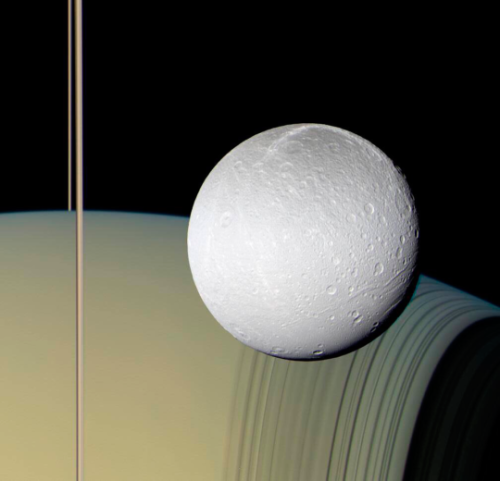Saturn, Cassini





Saturn, Cassini
More Posts from Ad-astra-affecte-spe and Others


Milky Way by Jonathon Wilcox

A Trailblazing Duo:
January 17, 2024 marks the 20th anniversary of Spirit and Opportunity's landing on Mars. The two of Mars Rovers, Spirit and Opportunity, landed on opposite sides of Mars and began exploring the planet. Since their landing, the rovers have sent more than 100,000 high-resolution, full-color images of the planet’s surface. Designed to last just 90 days, they exceeded expectations and changed the way we explore the Red Planet l more at NASA JPL

New pics of Io just dropped

More are over here at NASA's Juno probe site.


Interstellar dust in California Nebula © cosmic_background









solar system by NASA

2023 December 16
Crescent Enceladus Image Credit: Cassini Imaging Team, SSI, JPL, ESA, NASA
Explanation: Peering from the shadows, the Saturn-facing hemisphere of tantalizing inner moon Enceladus poses in this Cassini spacecraft image. North is up in the dramatic scene captured during November 2016 as Cassini’s camera was pointed in a nearly sunward direction about 130,000 kilometers from the moon’s bright crescent. In fact, the distant world reflects over 90 percent of the sunlight it receives, giving its surface about the same reflectivity as fresh snow. A mere 500 kilometers in diameter, Enceladus is a surprisingly active moon. Data and images collected during Cassini’s flybys have revealed water vapor and ice grains spewing from south polar geysers and evidence of an ocean of liquid water hidden beneath the moon’s icy crust.
∞ Source: apod.nasa.gov/apod/ap231216.html

an actual true color photograph showing Saturn, its rings, and one of its moons taken by the Cassini space probe orbiting 23.8k miles away, October 11, 2005

Into the Cosmic Heart, IC 1850 © Aleix Roig
-
 elementaldrop reblogged this · 1 month ago
elementaldrop reblogged this · 1 month ago -
 chalkrevelations reblogged this · 1 month ago
chalkrevelations reblogged this · 1 month ago -
 isadora-greenhall liked this · 1 month ago
isadora-greenhall liked this · 1 month ago -
 y2ksnowglobe reblogged this · 1 month ago
y2ksnowglobe reblogged this · 1 month ago -
 helloenee liked this · 7 months ago
helloenee liked this · 7 months ago -
 otroad liked this · 11 months ago
otroad liked this · 11 months ago -
 jett-blck liked this · 11 months ago
jett-blck liked this · 11 months ago -
 fotoniques liked this · 11 months ago
fotoniques liked this · 11 months ago -
 oblivioussaturn reblogged this · 1 year ago
oblivioussaturn reblogged this · 1 year ago -
 bi-hans liked this · 1 year ago
bi-hans liked this · 1 year ago -
 viking-illustrator liked this · 1 year ago
viking-illustrator liked this · 1 year ago -
 therealityhelix reblogged this · 1 year ago
therealityhelix reblogged this · 1 year ago -
 royjolie reblogged this · 1 year ago
royjolie reblogged this · 1 year ago -
 oh-nostalgiaa liked this · 1 year ago
oh-nostalgiaa liked this · 1 year ago -
 bearcina reblogged this · 1 year ago
bearcina reblogged this · 1 year ago -
 bearcina liked this · 1 year ago
bearcina liked this · 1 year ago -
 captastra reblogged this · 1 year ago
captastra reblogged this · 1 year ago -
 chrrybloss reblogged this · 1 year ago
chrrybloss reblogged this · 1 year ago -
 cheellart liked this · 1 year ago
cheellart liked this · 1 year ago -
 indigo-inferno liked this · 1 year ago
indigo-inferno liked this · 1 year ago -
 gerogiafromh liked this · 1 year ago
gerogiafromh liked this · 1 year ago -
 moocowmoocow reblogged this · 1 year ago
moocowmoocow reblogged this · 1 year ago -
 bdugay liked this · 1 year ago
bdugay liked this · 1 year ago -
 lbb69420 liked this · 1 year ago
lbb69420 liked this · 1 year ago -
 moocowmoocow liked this · 1 year ago
moocowmoocow liked this · 1 year ago -
 brennenburg reblogged this · 1 year ago
brennenburg reblogged this · 1 year ago -
 ryegun reblogged this · 1 year ago
ryegun reblogged this · 1 year ago -
 rocket-angel reblogged this · 1 year ago
rocket-angel reblogged this · 1 year ago -
 tuttosan-blog liked this · 1 year ago
tuttosan-blog liked this · 1 year ago -
 quinniebelle liked this · 1 year ago
quinniebelle liked this · 1 year ago -
 belowaveragebro liked this · 1 year ago
belowaveragebro liked this · 1 year ago -
 black0ld liked this · 1 year ago
black0ld liked this · 1 year ago -
 smaerdrevef reblogged this · 1 year ago
smaerdrevef reblogged this · 1 year ago -
 concontcompa liked this · 1 year ago
concontcompa liked this · 1 year ago -
 dihydrogenmonoxide-appreciation liked this · 1 year ago
dihydrogenmonoxide-appreciation liked this · 1 year ago -
 biofish liked this · 1 year ago
biofish liked this · 1 year ago -
 adayume-x liked this · 1 year ago
adayume-x liked this · 1 year ago -
 declanpipkin reblogged this · 1 year ago
declanpipkin reblogged this · 1 year ago -
 angelicsoul99 liked this · 1 year ago
angelicsoul99 liked this · 1 year ago -
 takethist0yourgrave reblogged this · 1 year ago
takethist0yourgrave reblogged this · 1 year ago -
 myhandsarepinknow reblogged this · 1 year ago
myhandsarepinknow reblogged this · 1 year ago -
 obsessivedaydreamer reblogged this · 1 year ago
obsessivedaydreamer reblogged this · 1 year ago -
 obsessivedaydreamer liked this · 1 year ago
obsessivedaydreamer liked this · 1 year ago

★•Astronomy, Physics, and Aerospace•★ Original and Reblogged Content curated by a NASA Solar System Ambassador
204 posts

